‘Big Fredville’ House was used as a girls boarding school from the mid-1920′s after the Plumptre family moved to the nearby newly built “Little Fredville” house.

Actress Georgette “Googie” Withers was a pupil there around 1929 to 1930 just prior to beginning her long career. She was educated first at Fredville Park School, and after a year or so moved to the Convent of the Holy Family in Kensington. Her professional training was undertaken with Italia Conti and then with Helena Lehmiski in Birmingham.
“Googie” was a successful stage, film and T.V. actress known in the 1940’s as “the best bad girl in British films” and was still performing in the West End with Vanessa Redgrave in 2002. She died aged 92 in Australia in 2011.
Information is sparse regarding the girls boarding school at the old Fredville mansion during the 1920’s and 30’s, and I am therefore very grateful to have received some photographs and, more importantly, some information kindly supplied by Philip Rowett whose late aunt, Nancy Rowett, attended the Fredville House school from 1931 to 1933.
Philip informed me that the school was run by two sisters, known as “Aunt Maud” and “Aunt Mary”, who claimed to provide a “home from home” for the children of parents who were abroad. The school had a lot of pet dogs, ponies, and other animals, which, Philip said, would have suited his aunt. He also said the description he had received of the school was that there was complete absence of discipline. This is somewhat at odds with what “Googie” Withers was reported to have said of the school in an interview referred to in “Double-Act: The Remarkable Lives and Careers of Googie Withers and John McCallum”, by Brian McFarlane, and published by Monash in 2015”, where it’s recorded that the school was run by two Irish sisters who, Googie said, “had no qualms about meting out punishment. We got beatings on our bottoms, and quite frankly I think I deserved it”. Perhaps her self-confessed bad behaviour led the sisters to take extreme measures and was the reason for Googie’s short time at Fredville.
Many of the photographs below come from an album of photographs that appear to have been given to prospective pupils parents to show the school facilities kindly sent to me by Philip Rowett. Other photographs are ones belonging to the late Nancy Rowett.

The school seems to have had some seventy or so pupils and the inclusion of photographs of a nursery and kindergarten indicate that pupils attended from a very early age, while other photographs show girls in their early to mid-teens.
My late father, Ron Webb, and his boyhood friend, the late Ken Theobald, both told me stories of how they and other village boys use to try and ride bareback on the schools ponies, which were kept in a part of Fredville Park, and of how they were chased off by staff from the school for doing so. Apparently none of them were able to stay on any of the ponies for more than a few seconds. My father told me that the pond opposite “The Royal Oak” was divided in half by a fence and that the Fredville ponies drank from the coach road side half of the pond and farm livestock from the other half.
At the out-break of the Second World War in 1939 the old mansion house was requisitioned by the Government and soon occupied by the Canadian Army, but shortly after they moved in the house was unfortunately badly damaged by fire and was eventually demolished in 1945. However, the clock tower, coach house, stable yard and out buildings escaped demolition and are now houses and workshops.


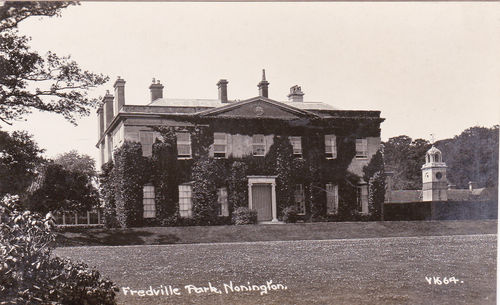










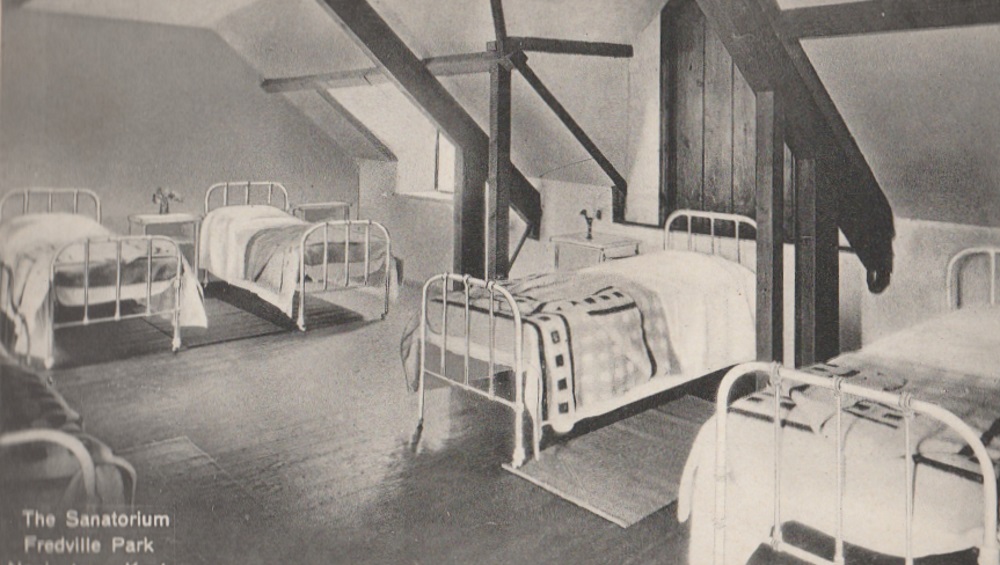
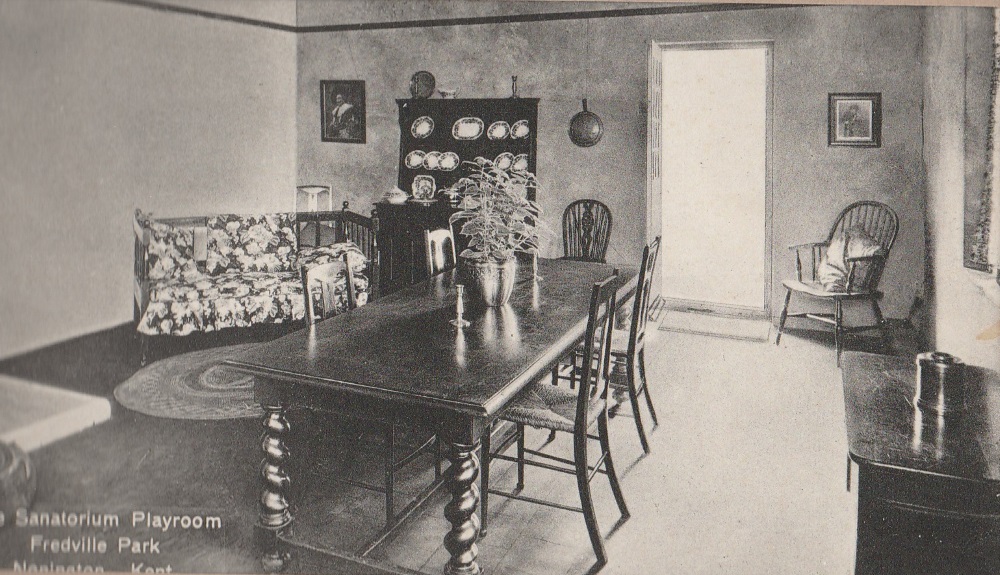


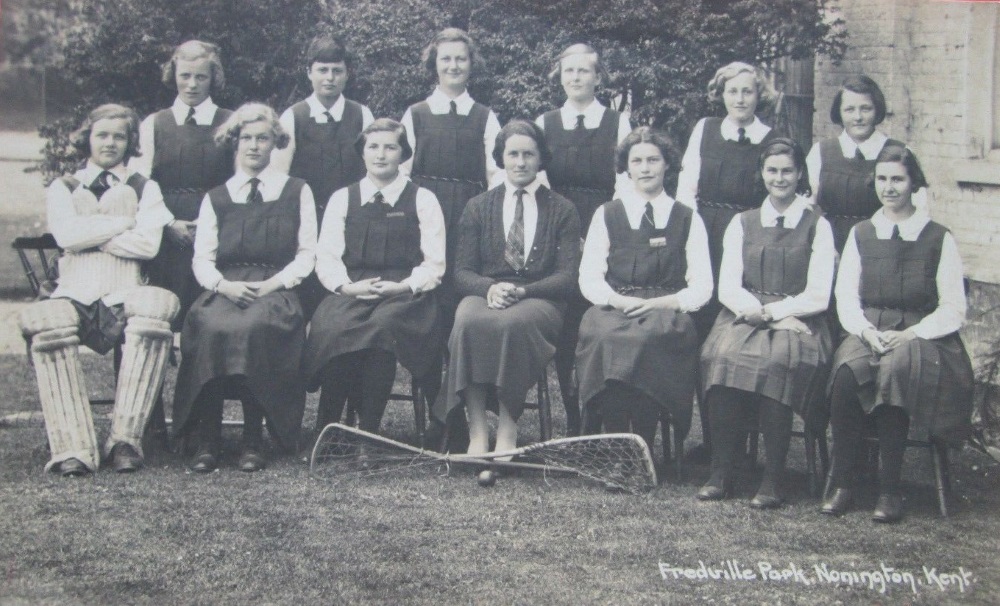




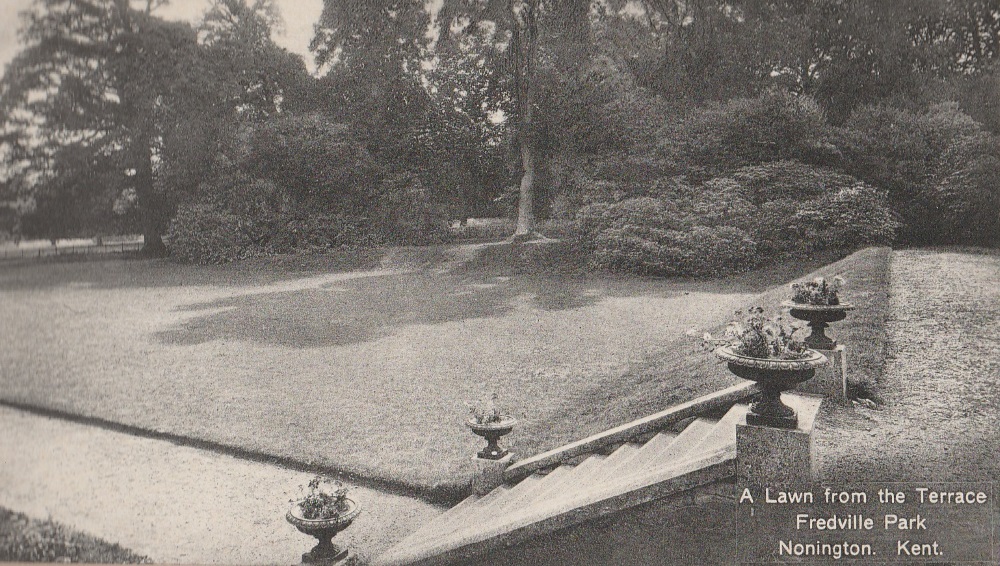








Thanks, Paul. Even if it is anecdotal it still adds to the overall picture and emphasizes what dangerously unhealthy times those days were for everyone.
Of course. But it is anecdotal, via my mother, probably from Aunt Awdry (my fourth Plumptre aunt) and then her mother. Such tales can easily get distorted.
Many thanks for the information, Paul. Would it be OK if I used the info contained in your PS on the website?
Very interesting. I regret that the Plumptre family has no records or photos of this spell of ‘Big Fredville’ (the name we who lived at ‘Little Fredville’ used for the old house). I recall one or two ex-pupils of the school coming to visit my parents across 1960-1990; but we kept no records of any anecdotes.
My aunts Eileen and Evelyn, who lived in the house, would certainly have recognised all the rooms in your amazing set of photos. I recall them saying, that they tried c. 1980 to reconstruct a room plan of the house; they were reasonably confident of the family rooms, but they could not get all the servant’s rooms correct!
I do not even know which ‘Miss Plumptre’ was a teacher at the school. Any of my three aunts Eileen Evelyn or Monica are possible; all were trained as teachers, and the lady appears some 30 years old, which fits.
PS. There is an unsavoury family tale, which probably relates to the ‘indoor swimming pool’ shown. Up until 1865, there was no sanitation at the house, and there was allegedly an open cess pit in the cellar. Following the tragic deaths of their eldest son and daughter, John and Helen, in 1861 from diphtheria, and another daughter Evelen in 1865, the tale is that Charles John and Fanny Augusta Plumptre realised they needed some sanitation, and installed a covered cess pit some way from the house. This tale illustrates the importance of the Victorian mania for public sanitation.
Thanks, Baz, I’m glad you enjoyed it.
Excellent read and photos Clive